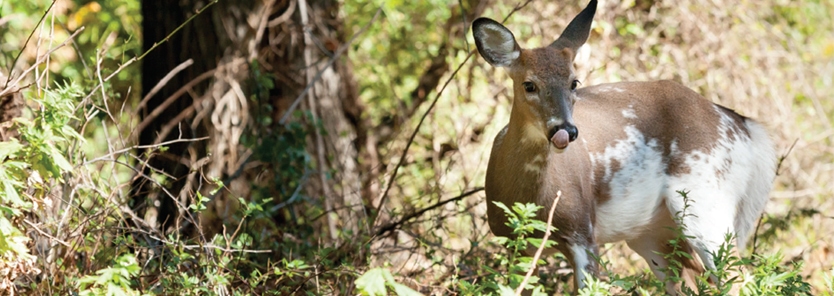Piebald Whitetail Deer: One In Thirty Thousand
“White deer”… just mention those two words around a deer camp or any gathering of hunters and you are sure to get some stories going. There is something mysterious and very intriguing about a white whitetail in the wild. Native Americans even believed they were magical and bad luck to kill. By definition, an albino whitetail deer is totally absent of body pigment and is solid white with pink eyes, nose, and hooves. Often confused with an albino, a piebald whitetail deer is slightly more common and is also a genetic mutation. Piebald deer can have varying amounts of white hair. Some piebald deer can be almost pure white except small patches of regular brown hair, while others carry just patches of white hair with otherwise normal markings.
Albinism is a recessive genetic trait that is found in animals where the gene responsible for hair, tissue, or skin coloration is missing. Since albinism and piebaldism are recessive traits, both parents must carry the trait to have albino or piebald offspring. The genes responsible for piebald and albino deer are not dominant and oftentimes the deer carrying these genes are biologically inferior.
So if an albino buck were to breed a doe that is not, they could only have an albino offspring if she carried the recessive genes for albinism. These offspring would carry the recessive gene but would have normal pigmentation. When two whitetails breed that carry the recessive genes, they have around a 25% chance of producing an albino fawn. Research says that your chances of seeing an albino in the wild are about “one in 30,000,” although there are some areas in the north that seem to have higher occurrences of true albino whitetails.
Studies show less than 2% of whitetails are piebald and are pretty rare to come across but a true albino is even less likely. Since whitetails are a prey species, being solid or mostly white carries some disadvantages. Not only are piebald and albino deer highly visible to predators and hunters from the day they are born, they are often born with physical abnormalities such as arched spines, deformed hooves, shortened jaws, and short legs.
Albino deer also often have vision deficiencies. With the handicaps that being a mostly white deer may have, it can be rare for one to reach maturity or even more so, old age. Some states protect albino deer from harvest such as Minnesota, Tennessee, Illinois, Wisconsin, and Iowa. Even piebald deer with more than 50% white hair are protected in Iowa and the same for Montana with more than 75%.There is the rare case where an albino or piebald deer lives to maturity and seems to be in good health without any major deformities. One thing is for sure they are easy to identify in trail cam pictures among all the other deer that they interact with. If you are blessed to see a piebald or albino deer in the wild count your-self lucky, they are a rare and beautiful sight.
~
For more from GameKeeper Farming For Wildlife like Piebald Whitetail Deer: One In Thirty Thousand, join our weekly newsletter. Your source for information, equipment, know-how, deals and discounts to help you get the most from every hard-earned moment in the field.









